Doi Phahom Pok National Park: A Northern Thailand Gem
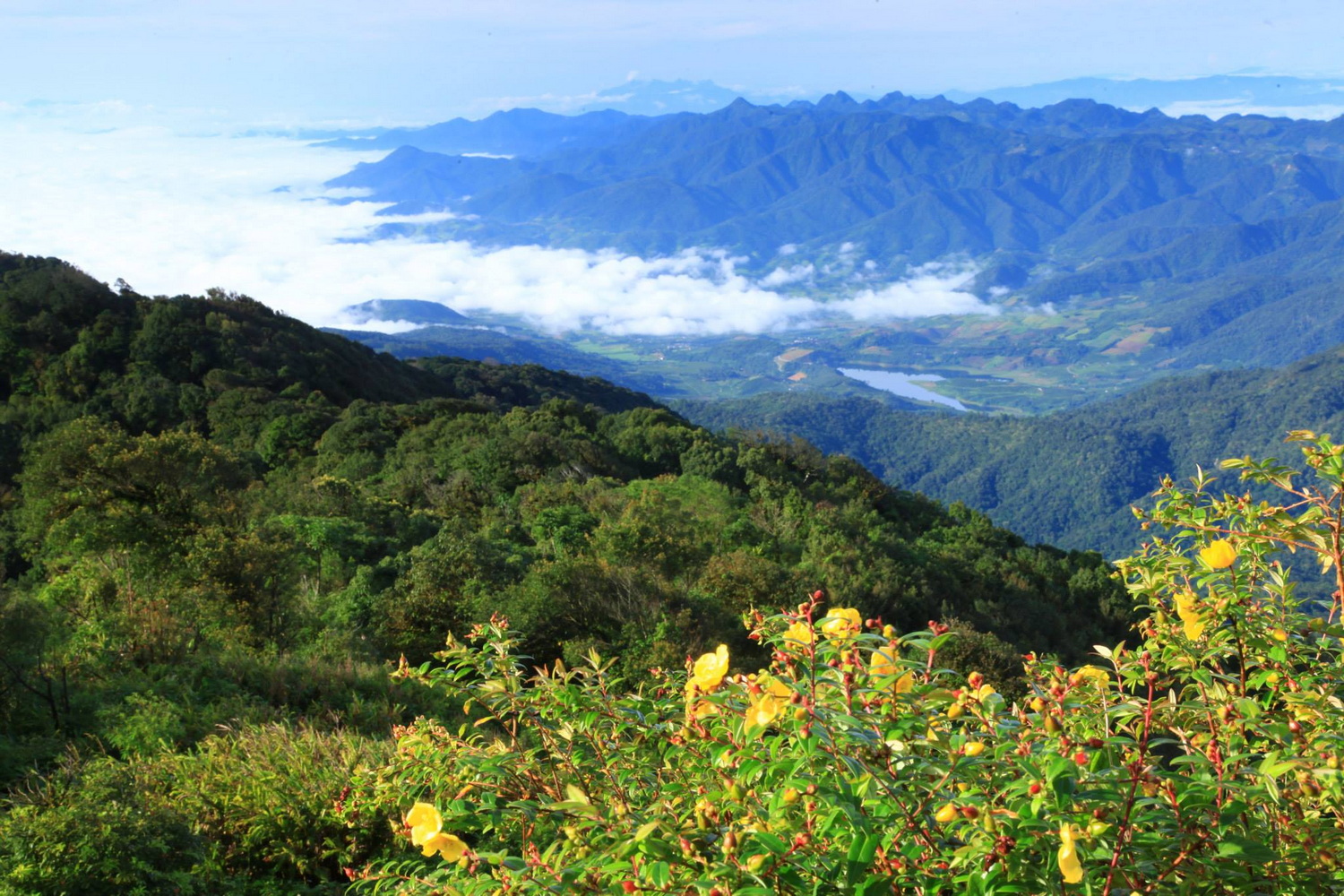
Exploring the Natural Splendor of Chiang Mai’s Pristine Wilderness
Doi Phahom Pok National Park, located in the majestic region of Chiang Mai, Thailand, stands as a testament to the country’s commitment to preserving its natural beauty. This article delves into the park’s diverse offerings, from its unique geography and diverse wildlife to its breathtaking viewpoints and tranquil hot springs. A popular destination among nature enthusiasts and adventurers alike, the park provides an escape into a world where nature’s wonders are on full display.
General Information
Nestled in the northern province of Chiang Mai, Doi Pha Hom Pok National Park spans an impressive area, offering a rich tapestry of flora and fauna. It’s renowned for its rolling hills, dense forests, and diverse ecosystem. The park is a part of the larger conservation efforts in Thailand, showcasing the country’s dedication to environmental preservation. Visitors are greeted with well-marked trails, informative visitor centers, and facilities that ensure a comfortable yet adventurous experience.

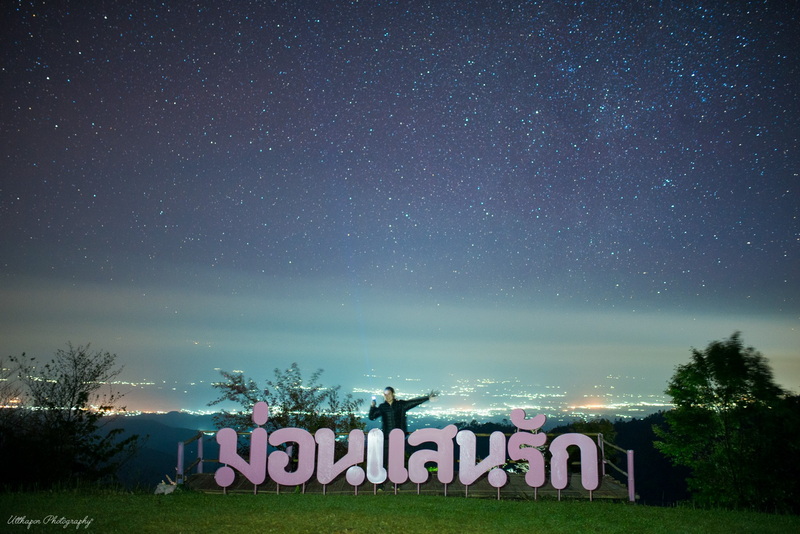
Geography, Flora, and Fauna
The park’s landscape is a harmonious blend of rugged mountains, lush valleys, and meandering rivers. It’s home to a wide range of plant species, from towering trees to delicate wildflowers. Wildlife enthusiasts may spot various bird species, small mammals, and even rare butterflies. The park’s biodiversity is a crucial aspect of its appeal, offering a glimpse into the rich natural heritage of Northern Thailand.
Climate and Best Time to Visit
Doi Phahom Pok experiences a tropical climate, with distinct wet and dry seasons. The best time to visit is during the cooler months from November to February, when the weather is pleasant, and the natural scenery is at its most vibrant. This period also offers the best conditions for trekking and exploring the park’s many trails.
The Attractions of Doi Phahom Pok National Park
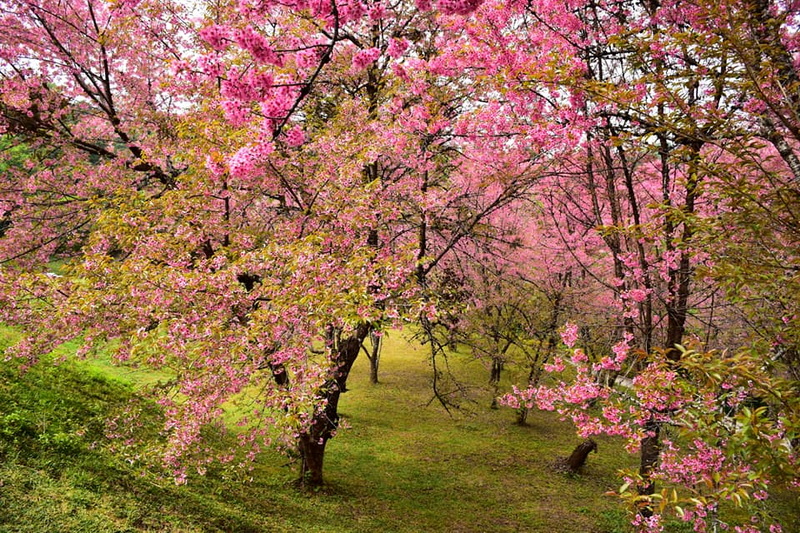
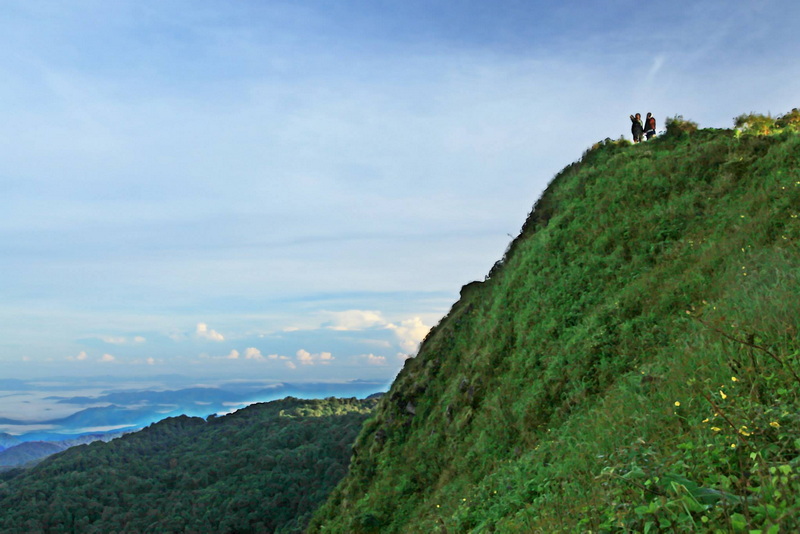

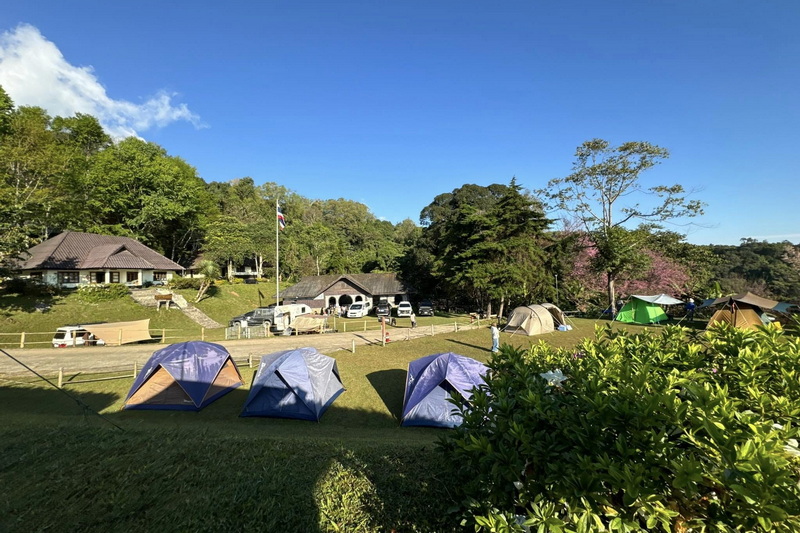
Doi Phahom Pok Viewpoint
The trek to Doi Phahom Pok Viewpoint is a highlight for many visitors. This two-day, one-night journey leads adventurers to Thailand’s second-highest peak, standing at 2,285 meters above sea level. The trek begins at a designated camping area, covering a round-trip distance of approximately 7 kilometers. Despite some steep sections, the route is generally manageable, leading to a summit that offers spectacular views. The effort is rewarded with breathtaking vistas, making it a must-do for avid hikers.
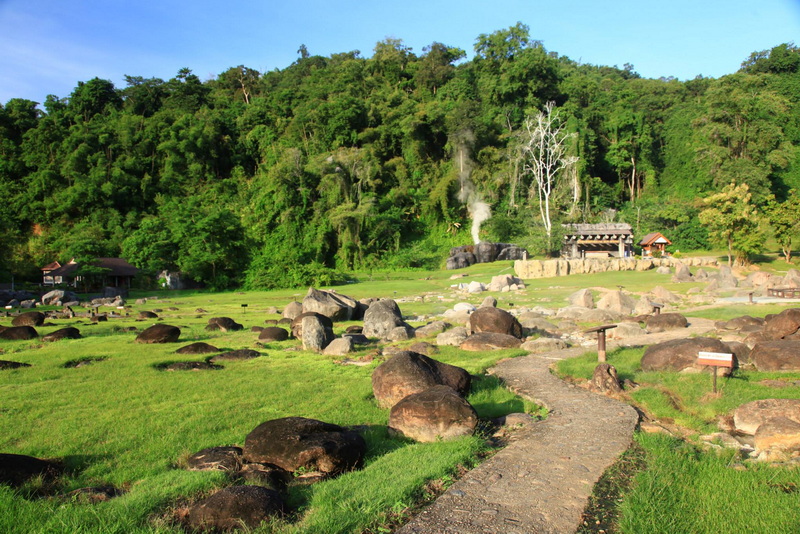
Fang Hot Springs
Near the park’s main office lies the famous Fang Hot Springs, a collection of over 50 natural hot spring wells. The largest of these springs shoots water over 30 meters high. With temperatures ranging from 40-88 degrees Celsius, these springs create a misty, ethereal atmosphere. The park provides facilities like steam rooms, private mineral baths, and open-air pools, allowing visitors to relax and rejuvenate after a day of exploration.
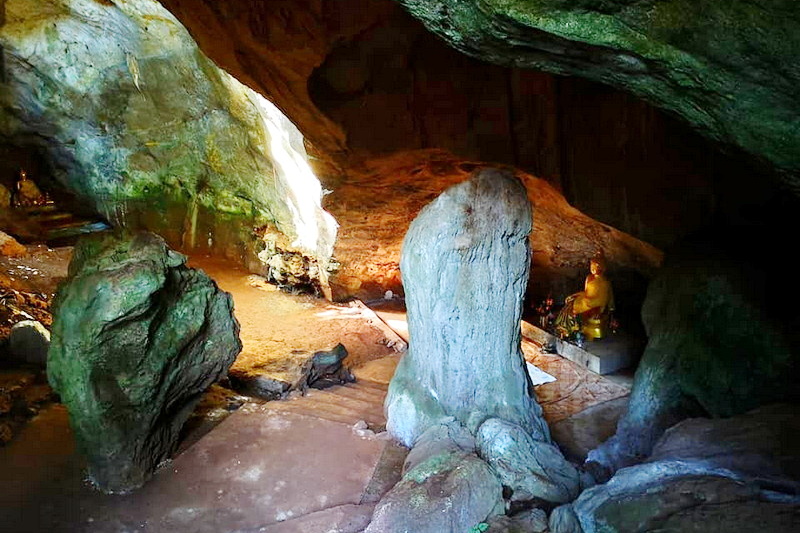
Huai Born Cave
Huai Born Cave is a large cave system known for its stunning stalactites and stalagmites. Extending approximately 324 meters in length and 20-30 meters in width, it is safe and accessible for visitors. The cave features a large chamber capable of holding 40-50 people, surrounded by beautiful rock formations. Located about 12 kilometers from Fang, it’s a short trek from the hot springs, offering another facet of the park’s natural beauty.
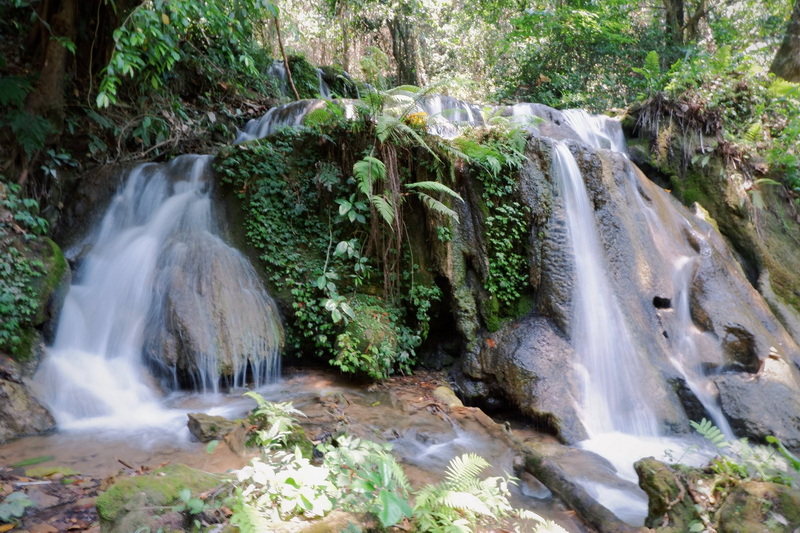
Pong Nam Dung Waterfall
This small yet picturesque limestone waterfall is reached via a 700-meter walk through dense, shady forests. Pong Nam Dung Waterfall, with its consistent water flow and serene setting, is a perfect spot for relaxation. The area features a small cave with a dripping ceiling, creating unique rock formations. Located near a park ranger station, it provides a refreshing break amidst nature’s tranquility.
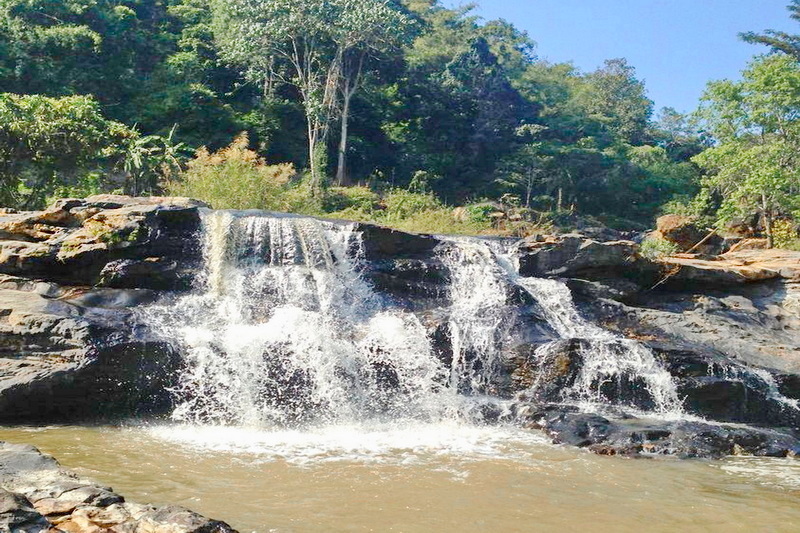
Tard Luang Waterfall
Tard Luang Waterfall is noted for its beautifully eroded rock formations, creating a unique landscape that attracts visitors year-round. Especially popular during the summer and Songkran festival, it’s located about 62 kilometers from Chiang Rai and 12 kilometers from Mae Suai. The waterfall is a picturesque spot for picnics and relaxation, offering a peaceful environment away from the hustle and bustle.
Accommodation
For those wishing to experience a sunrise over the mountains, staying overnight at one of the camp sites below the summit is ideal. From the campsite, it’s a challenging one-hour hike to the summit. Alternatively, Doi Pumuen Homestay in a Lahu hill-tribe village offers an immersive cultural experience. Here, guests can participate in the local way of life, including tea and coffee cultivation. The homestay is a 14km hike from the summit, with numerous other trails to explore.
Ticket Information
The park charges an entrance fee of 50 THB for adults and 20 THB for children (Thai nationals). For foreign visitors, the fee is 300 THB for adults and 150 THB for children.
How to Get There
Doi Phahom Pok National Park is accessible from Chiang Mai city via Route 107 to Fang district. From Fang, take the Fang-Mon Pin road for about 3 kilometers, then turn right onto Route 4054 and continue for 8 kilometers to reach the park.
- By Car: Self-driving is a convenient option.
- By Tour Agency: Local operators in Chiang Mai offer private tours, car rentals with drivers, and knowledgeable guides. This allows for a personalized itinerary and exploration of the park at your own pace.
In summary, Doi Phahom Pok National Park is a stunning natural haven that offers a diverse range of activities and sights for all types of travelers. From its breathtaking viewpoints to relaxing hot springs and rich cultural experiences, it’s a destination that truly encapsulates the beauty and spirit of Northern Thailand.

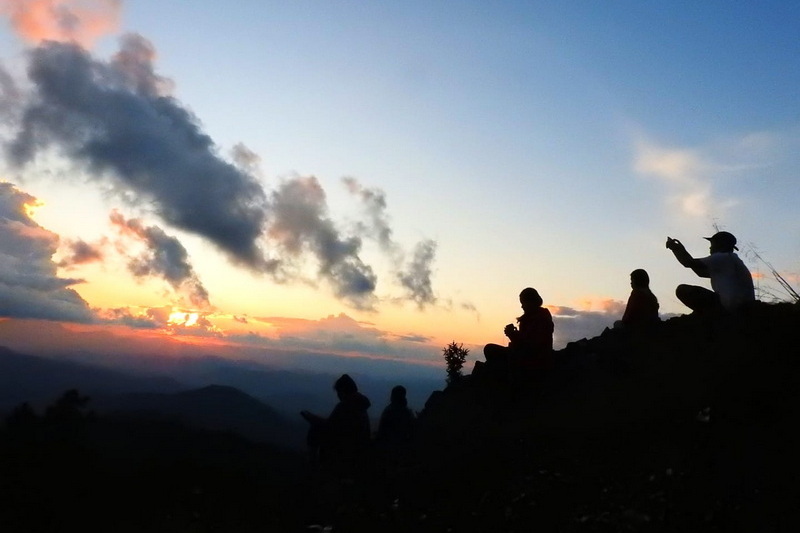

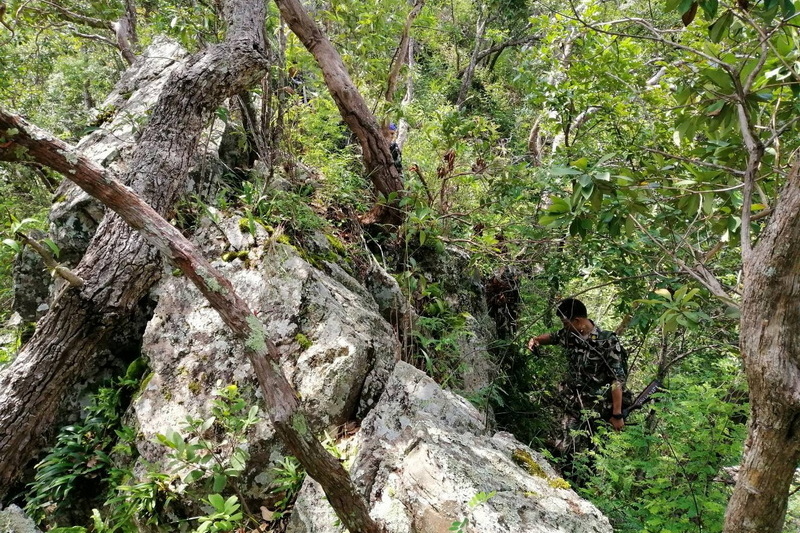
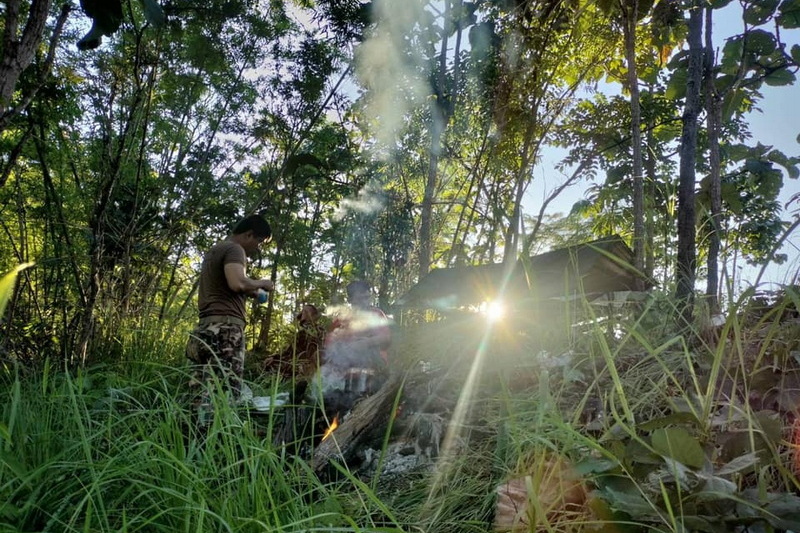
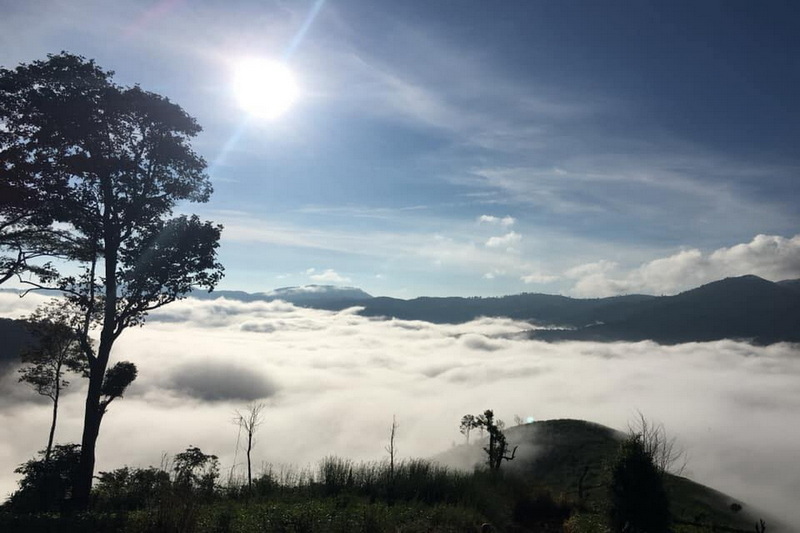
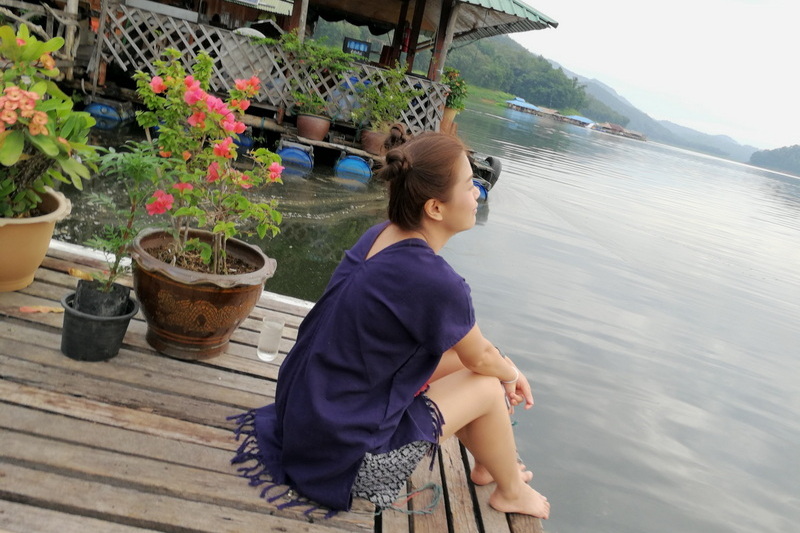













Leave A Comment